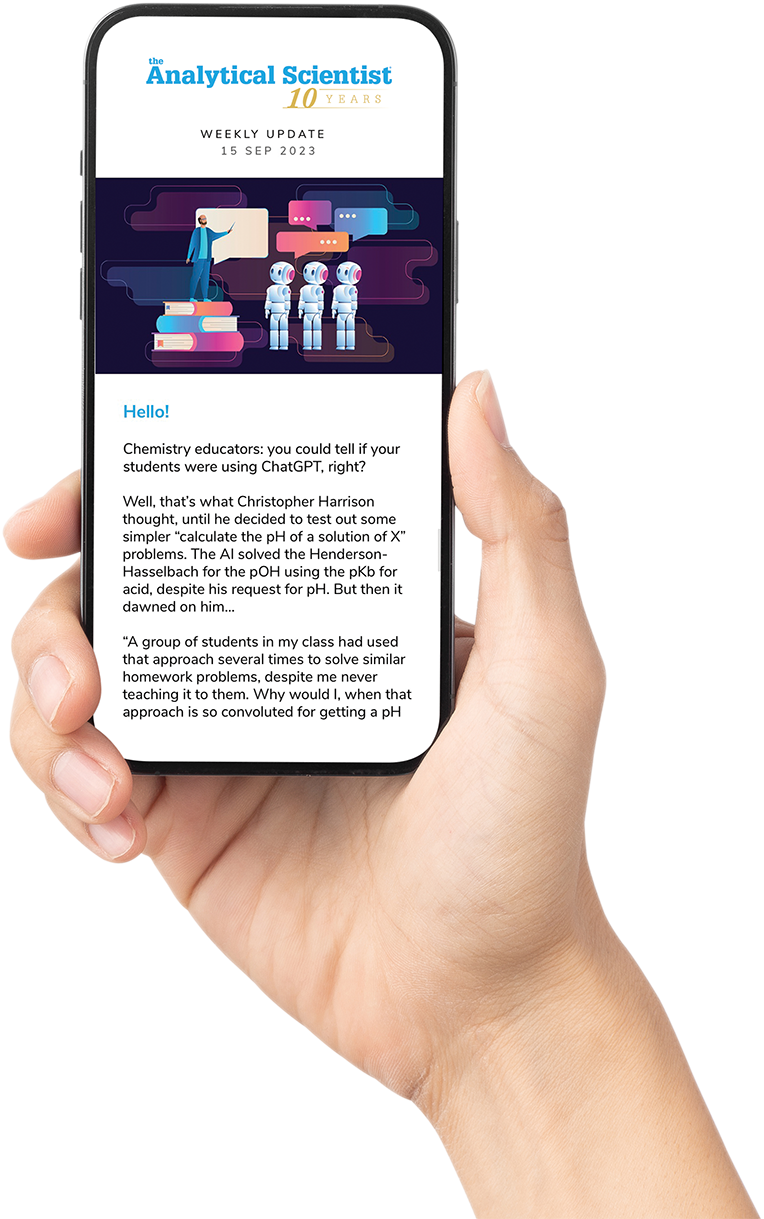
Radon is well known as a leading cause of lung cancer, especially among people who do not smoke tobacco, but reliably reconstructing an individual’s long-term exposure has long been out of reach. Home testing can reveal current levels, but not decades of cumulative contact – the timescale that truly informs personal risk. To bridge that gap, researchers at the University of Calgary have turned to an unexpected biological record: toenail clippings.
The team developed a method based on ultra-clean sample preparation and femtogram-level inductively coupled plasma mass spectrometry (ICP-MS) to trace radioactive lead isotopes formed from radon decay – transforming nail clippings into personal archives of environmental exposure.
Here, Aaron Goodarzi, Director of the Robson DNA Science Centre and a Professor at the University of Calgary’s Arnie Charbonneau Cancer Institute, Canada, explains how this unconventional biomarker could refine cancer risk assessment, expand screening eligibility, and reshape the way we think about invisible environmental exposures.
Let’s start with the obvious question: why toenails?
We came to our decision after first considering what happens to radon once it’s absorbed by the body: it rapidly undergoes radioactive decay and, within minutes, transforms into solid radioactive lead-210. Radioactive lead is treated no differently to non-radioactive lead in the body, and is slowly sequestered into a variety of tissues including bone and fat, with a long and slow level of clearance (excretion) via more “disposable” tissues that humans constantly shed, such as skin, hair and nails. The fact that our bodies aren’t particularly effective when clearing lead from the system contributes to why lead of any type is quite toxic – inevitably, it builds up.
The amount of radioactive lead generated by radon decay isn’t sufficient to cause concern of lead poisoning per se; rather, it’s the radiation it emits as it slowly becomes stable lead that’s harmful to human health. Radioactive lead, however, does accumulate and quantitatively reflects a person's long term exposure to the source (i.e. radon). Of all tissues where radioactive lead from radon is present, it’s not really practical to go after samples of bone, skin, or fat from living people. Furthermore, hair isn’t ideal because, first, not everyone actually has (enough) hair, and, second, hair is regularly subjected to many variables such as soaps, gels, sprays, and dyes, further increasing complexity.
We decided to go after toenails specifically because: (i) they grow twice as slowly as fingernails, making them a better indicator of longer term exposure, (ii) they typically provide more mass per clipping, (iii) people are often more willing to give toenail samples, compared with fingernails; and (iv) they’re less exposed to cosmetic products, household chemicals, workplace materials, or food contact versus fingernails. With all this in mind, toenails were considered to be less complicated in terms of variables, informing our decision.
How do you measure radioactive lead isotopes in nail clipping samples?
To measure radioactive lead-210 in toenail clippings, they must first be processed in an ultra-clean, metal-free facility – designed to eliminate even trace contamination from sources like equipment, sinks, or door hinges. When measuring at femtogram detection levels, just a few nanograms of stray metal dust can easily overwhelm the desired signal.
Once received, the nail clippings are thoroughly cleaned with a series of chemical washes and ultrapure water to remove any external contaminants. They’re then digested under high temperature and pressure in strong acid until fully dissolved, in a tightly controlled process designed to prevent contamination and maintain complete sample traceability.
The resulting solutions are analyzed in an adjacent facility using ICP-MS, which quantifies the isotopic composition of lead with atomic precision. The technology includes measuring both radioactive isotopes such as lead-210 and stable isotopes present naturally in the environment
We then calculate the ratio of radioactive lead-210, derived from radon, to the total stable lead in each sample. That metric provided a quantitative readout that, in our pilot study, correlated strongly with an individual’s radon exposure history spanning roughly 5 to 20 years.
Did any of your results surprise you?
Yes, although perhaps not in the way you might think – we were a bit surprised it worked at all! Not because of the theory – that we were confident in – but rather that we were able to overcome the technical hurdle of measuring at the low femtogram scale. That limitation is a key reason this theory was not first put into practice (or at least attempted) fifty years ago.
Another surprise came when we detected clear evidence of past high radon exposure in participants who had already mitigated their homes – sometimes months, sometimes several years – before submitting their toenail samples. Although lead-210 levels in their nails began to decline compared to those from homes still high in radon, the levels remained strikingly elevated and easily distinguishable. That was encouraging, because it showed the method was working as intended: capturing a record of historical radon exposure that wouldn’t be visible through current home testing.
What were the main challenges your team faced in refining the method – and how did you overcome them?
Originally we thought that two consecutive toenail clippings would be sufficient for all people in our pilot project. We were wrong about that, and realized a few things.
First, some participants trimmed their nails much more often than the typical monthly cycle, meaning their samples contained less material. Second, the mass (grams) of toenail clippings “produced” by the males in our study was double that of the females, even allowing for the exact same time between clippings: a sex-based effect we were not aware of at the time of pilot project design. That ultimately left us with not enough sample material for a minority of our female participants. Based on this, we’ve of course changed our process and guidance, now asking for four consecutive months worth of “total clippings” produced by a person in that time.
Another issue was obtaining the right analytical standards during method development. We originally desired a known quantity of lead-205 for this, however the availability of this isotope is challenging, with global supplies being rare to the extreme. So we opted to use a thallium isotope as the next best alternative. It worked well, though the process would have been much simpler had we been able to access lead-205.
If validated at scale, how might this approach change how we screen for or prevent lung cancer, particularly in people who do not smoke tobacco?
Based on current inclusion criteria, two out of five people diagnosed with lung cancer in Canada are not, and never will be, eligible for lung cancer screening. Those criteria are, by necessity, based on the only reliable measures of lung cancer risk we can quantify at the level of an individual person (their tobacco smoking history, familial history of cancer, age etc.). Of these, only individuals with a moderate to heavy tobacco smoking history meet the minimum risk threshold for eligibility.
It's important to note that this is about a careful consideration of risk versus benefit. The healthcare system cannot, and should not screen people with insufficient estimated lung cancer risk. Screening involves a low-dose CT scan, which is both costly and carries its own small but measurable risk. Like all screening, such as colonoscopy for catching colorectal cancers early, the risks must be outweighed by benefits. In this case, that means focusing on individuals whose medical history indicates at least a modest (1.5 to 2 percent) likelihood of developing lung cancer within the next six years.
At present, virtually no Canadian has a valid radon test for every indoor environment they’ve occupied over the past two decades. That information simply doesn’t exist – and likely never will. Yet it’s exactly the measurement (or a reliable proxy for it) needed to reliably estimate an individual's history of radon exposure. If our technique of measuring a personalized history of radon exposure is validated, our hope is that this approach might meet the threshold to be included within current lung cancer screening criteria. If so, more people who need to be screened for lung cancer could be included in that in the future, reducing costs and saving lives.
As you move into larger validation trials, what’s next for your team?
Right now, we’re almost three quarters of the way to our goal of recruiting 10,000 people from all across Canada for the validation trial. We predict that the analysis will take until at least 2029 to complete, so we’re mindful to stay focused on that!
That said, also on our horizon right now is the issue of wildfire smoke – another increasingly prevalent cause of non-tobacco lung cancer in Canada. We suspect that the particulate matter (PM2.5) from wildfire smoke interacts with radon decay products to multiply radiation doses people experience (from radon), and hence multiply lung cancer risks for people exposed to both high radon and PM2.5.
If our proposed research receives funding (it is under peer review now), participants enrolled in our current projects may be invited to consider taking part in related wildfire smoke studies. For instance, we may ask whether people may want to measure long-term indoor PM2.5 averages in the same homes that we’re already testing for radon and collecting toenail samples.
The motivation behind this is simple: when assessing non-tobacco lung cancer risks, we need a holistic view of all potential contributing factors – and to understand how these exposures interact across different environments, buildings, and populations.
If people are interested in learning more, or potentially signing up for this research, all details can be found at the website of the national study (www.evictradon.org).




